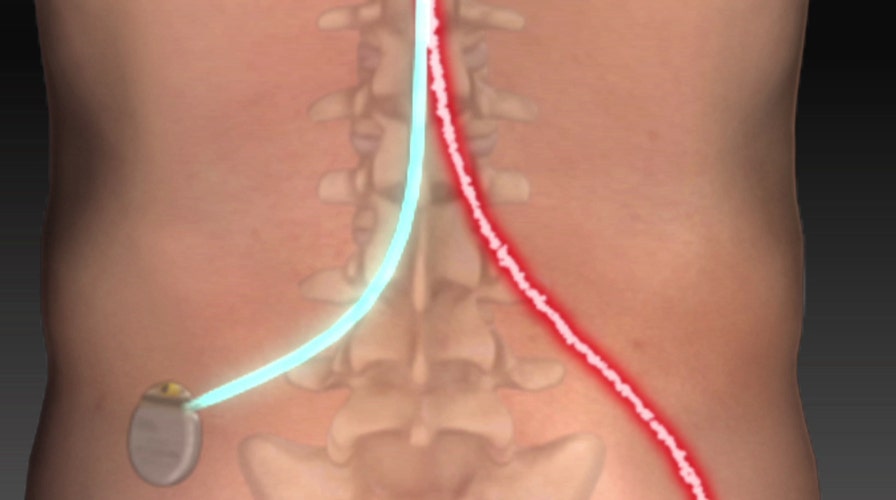Zapping back pain
Doctors are using spinal cord stimulation for patients who have had surgery and still have excruciating back pain
Dawn Kaplan’s dream vacation to Italy’s Amalfi Coast in 2010 was life changing – but for all the wrong reasons.
As she was walking down the winding roads embedded in the coast’s mountaintops, she herniated a disk in her back.
“I immediately felt tremendous pain in my lower back shooting down my leg – my right leg,” Kaplan, from Rockville Centre, New York, told FoxNews.com. “It was just constant.”
After an excruciating trip home, the mother of four had surgery to remove the disk in New York. But when she woke up the next day, the pain was worse than before.
"I was unable to move. I would literally scream from morning till night. I was shot up with morphine constantly, all kinds of medications,” Kaplan said.
After a frustrating six months, Kaplan finally went to see a pain specialist. She tried more pain medications, epidurals and acupuncture – but nothing worked.
Eventually, Dr. Neel Mehta with New York-Presbyterian/Weill Cornell Medical Center suggested spinal cord stimulation, a procedure that uses mild electronic shocks to block nerve impulses in the spine. The treatment ultimately helps to interrupt the body’s pain signals with more pleasant ones.
"The best analogy would be if we stubbed our toe and we started to rub it, we pretty much know that rubbing our toe doesn't have any healing property, but it certainly makes our pain much more bearable," said Mehta, medical director for pain medicine at NewYork-Presbyterian/Weill Cornell Medical Center.
The procedure, which takes 30 minutes to an hour-and-a-half to complete, involves placing electrodes next to the spine. The patient uses a remote to control the stimulation, which feels like little shocks underneath the skin.
“We make a small incision in their back – about less than an inch – and we make a small incision around their buttock area, where we implant the battery, and everything is connected under the skin,” Mehta said.
Kaplan said she was initially too afraid to undergo the surgery, but she finally gave it a try in October 2012. Now, she said she’s very happy she had the procedure done.
"From the moment I awakened I just felt such a relief of pain,” Kaplan said.
The treatment has allowed Kaplan to regain most of her mobility, though she still needs assistance with cooking and family events. The stimulation technology needs to be reprogrammed every few months, and Mehta noted the battery needs to be replaced every five to 10 years.

